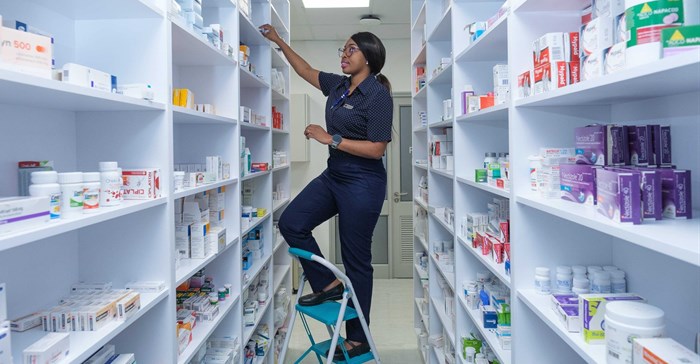Netcare hospitals have now launched electronic prescriptions, the first of its kind at this scale in South Africa

Source: Supplied.
Netcare hospitals have now launched electronic prescriptions, the first of its kind at this scale in South Africa
“The additional medication safety and convenience that digital technology brings through e-scripting is quickly making traditional handwritten prescriptions obsolete in the in-hospital setting,” says Vishala Gokool-Sewram, Netcare’s general manager of pharmacy.
“E-scripting minimises the potential for human error in interpreting handwritten prescriptions or delays with physically moving paper scripts to wherever they are needed around the hospital,” she says.
The pioneering Netcare e-scripting process was first verified by the South African Pharmacy Council in 2020 and, by May 2021, e-scripting was up and running in five Netcare hospitals. To date more than a million e-scripts have been issued using the system, which has now been implemented at 26 hospitals across South Africa as part of the Netcare group’s adoption of an electronic medical records system.
E-scripting technology
Angeliki Messina, Netcare’s head of clinical pharmacy digitisation, explains that the move to electronic medical records have allowed for further integration with other digital systems.
“E-scripting can eliminate errors of illegibility or misinterpretation. The Netcare e-scripting process complies with national regulations for e-scripting, and includes an advanced electronic signature which involves an accreditation process to ensure validity of, and security for, prescribers. It is the first among private institutional pharmacies in this country.”
The use of electronic medical records has enabled the development of a fully integrated pharmacy module that has provided additional patient safety measures with regard to medication within Netcare facilities, including automated checks for adverse interaction with disease conditions or other medication.
“Taking this technology a step further, we are now able to make discharge prescriptions available to patients online by means of the My Netcare Online portal. E-scripting therefore makes discharge prescriptions easily accessible to share with other external healthcare providers, as needed,
which enables individuals to be actively involved in their healthcare,” says Messina. “This is yet another first for SA in-hospital pharmacy practice that enhances convenience in the patient journey.”
Netcare has collaborated with pharmacies across the country to enable patients to select their pharmacy of choice to dispense their discharge prescriptions by means of My Netcare Online.
Digitisation enhances patient safety
Medication safety lead, Nirasha Singh, points out that Netcare’s medication safety programme, established to prevent medication errors from occurring, is aligned to the World Health Organization’s global patient safety challenge of ‘medication without harm’.
“From the point of the doctor prescribing the medication, to the dispensing of the prescription in the pharmacy and the administration of the medication to the patient in the ward, the e-scripting and electronic medical record system has strengthened processes to ensure that medication is used safely to reduce and prevent the majority of medication errors, which could otherwise have serious consequences.”
With multiple automated safety checks, the digital system assists healthcare professionals to make sure it is the correct medicine at the correct dosage, throughout the prescription process. The system puts patient safety with regard to medication at its core.
“Digital pharmacy e-scripting is the latest innovation in providing person centred health and care that is digitally enabled and data driven, and is setting the standard for the future in providing the best and safest levels of care. With digital technology’s immense potential for improving outcomes and greater efficiencies, it is being rapidly adopted in leading healthcare systems internationally, and handwritten prescriptions will soon be a thing of the past in Netcare hospitals,” Gokool-Sewram concludes.
































